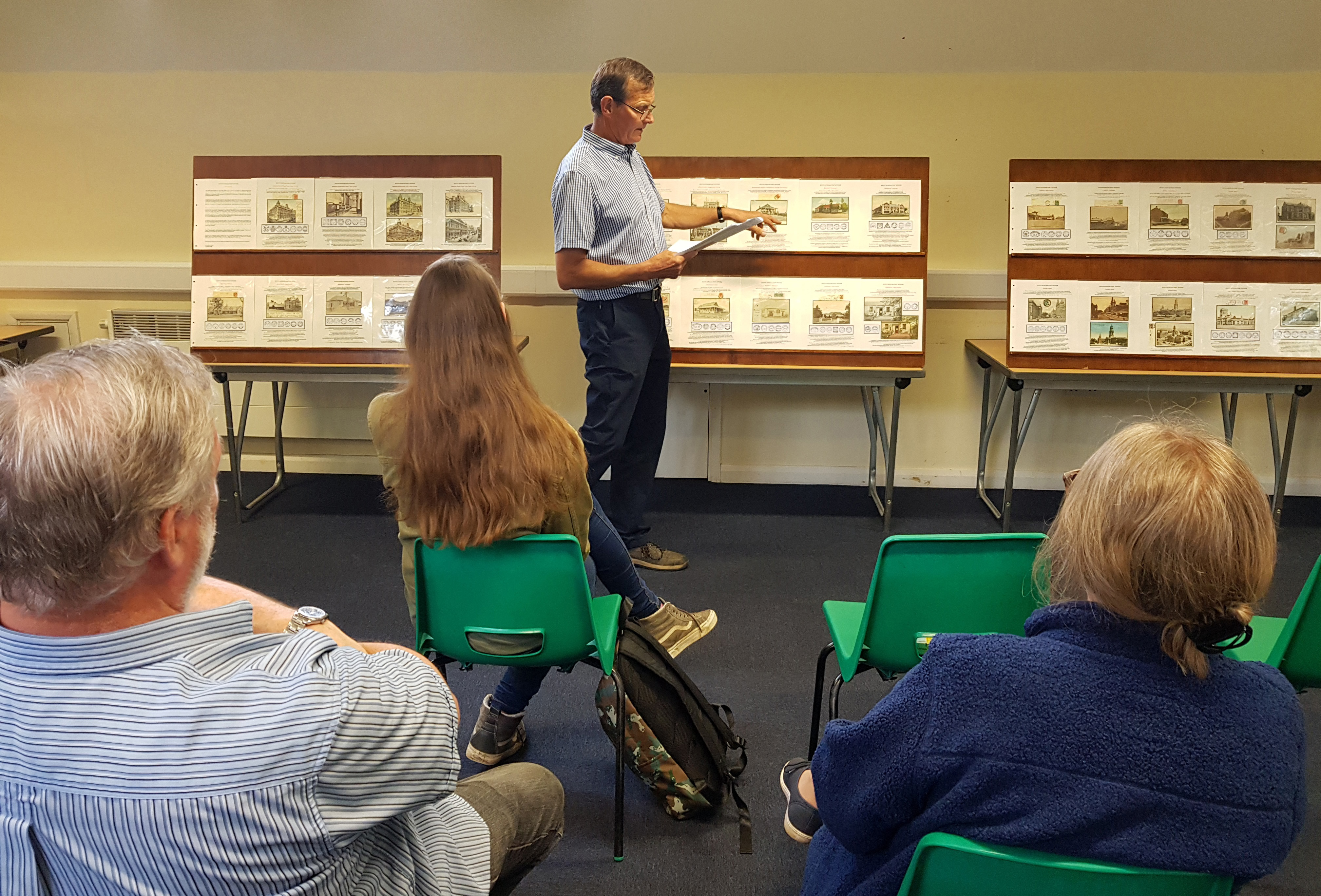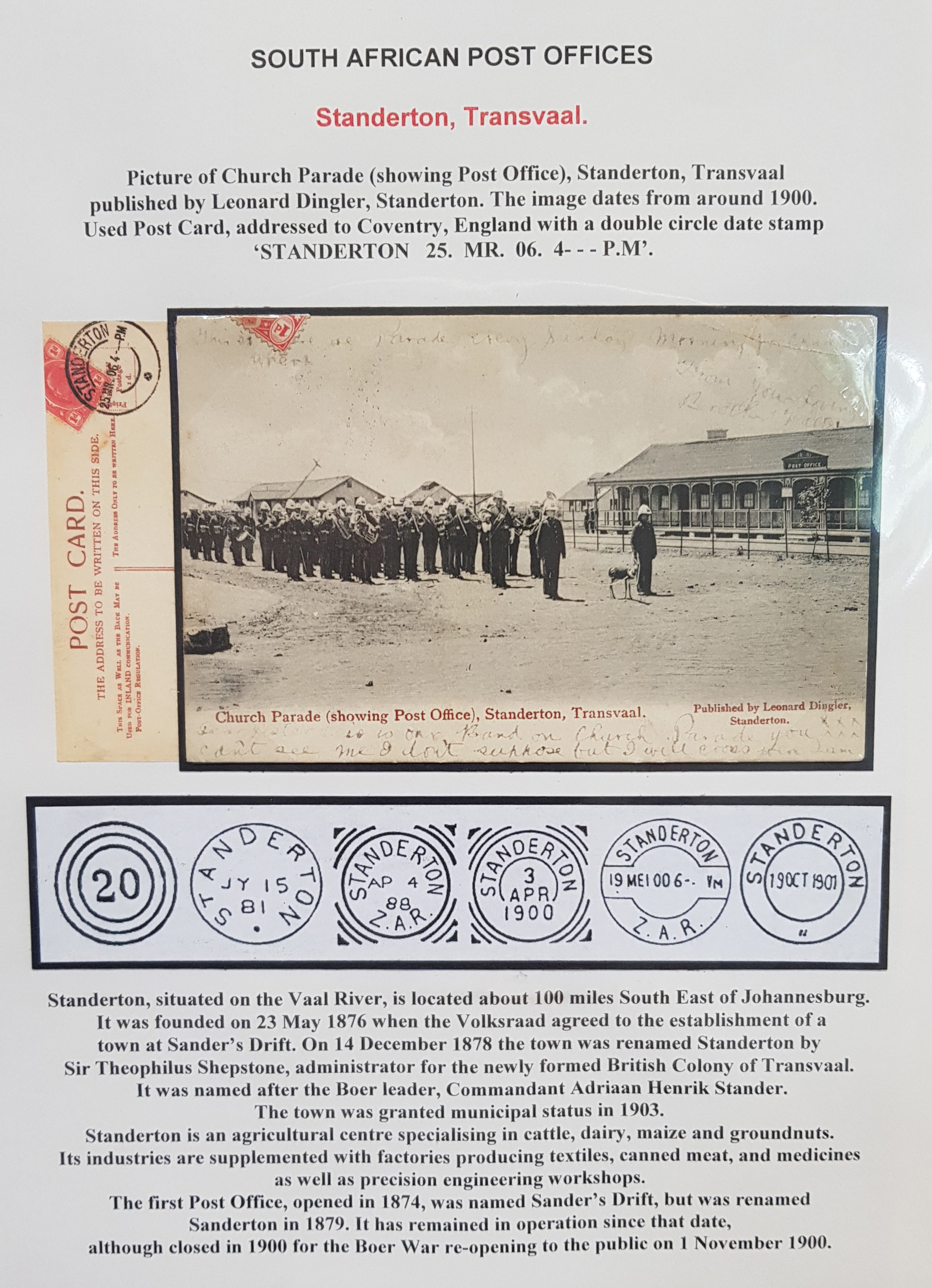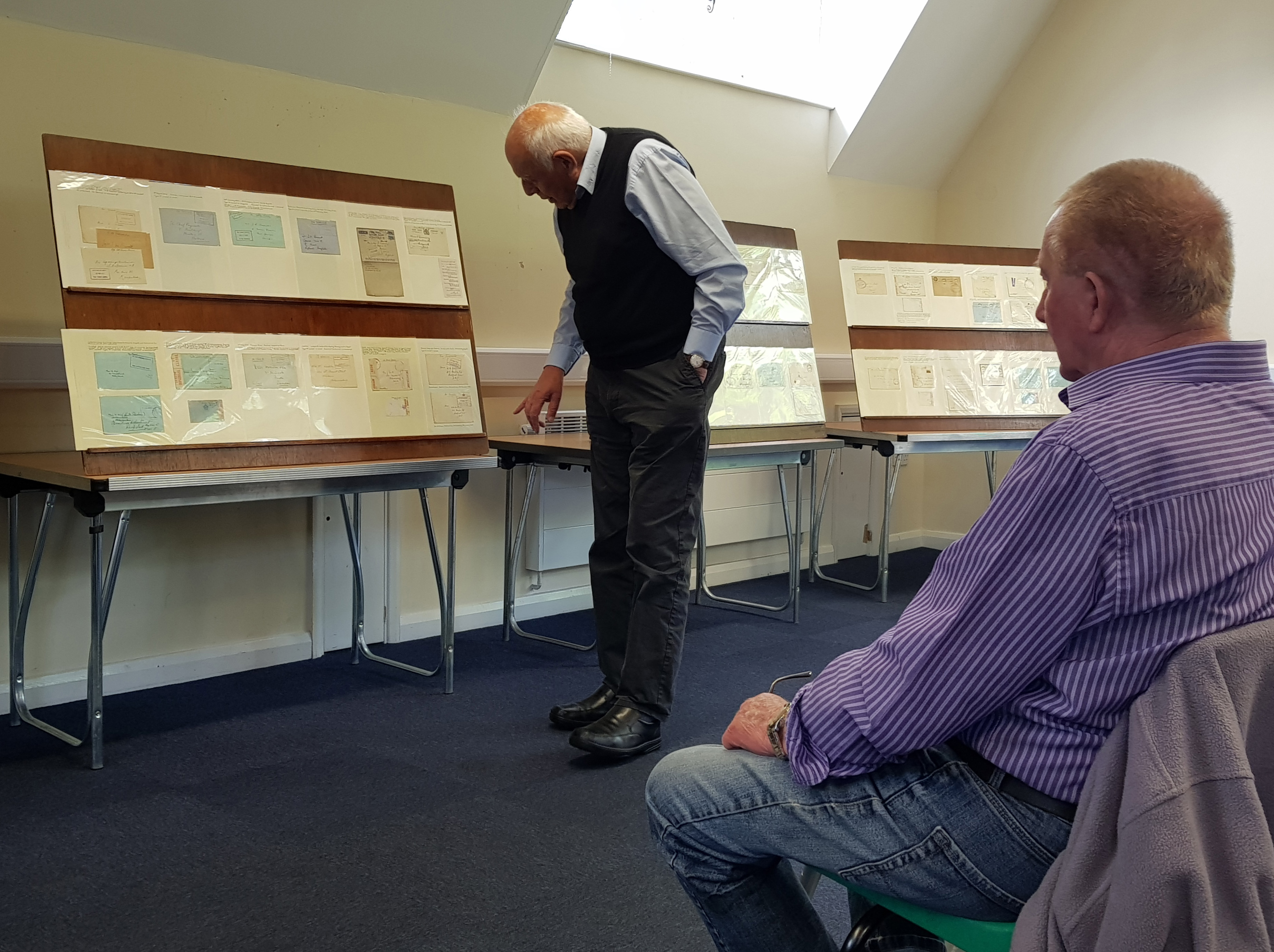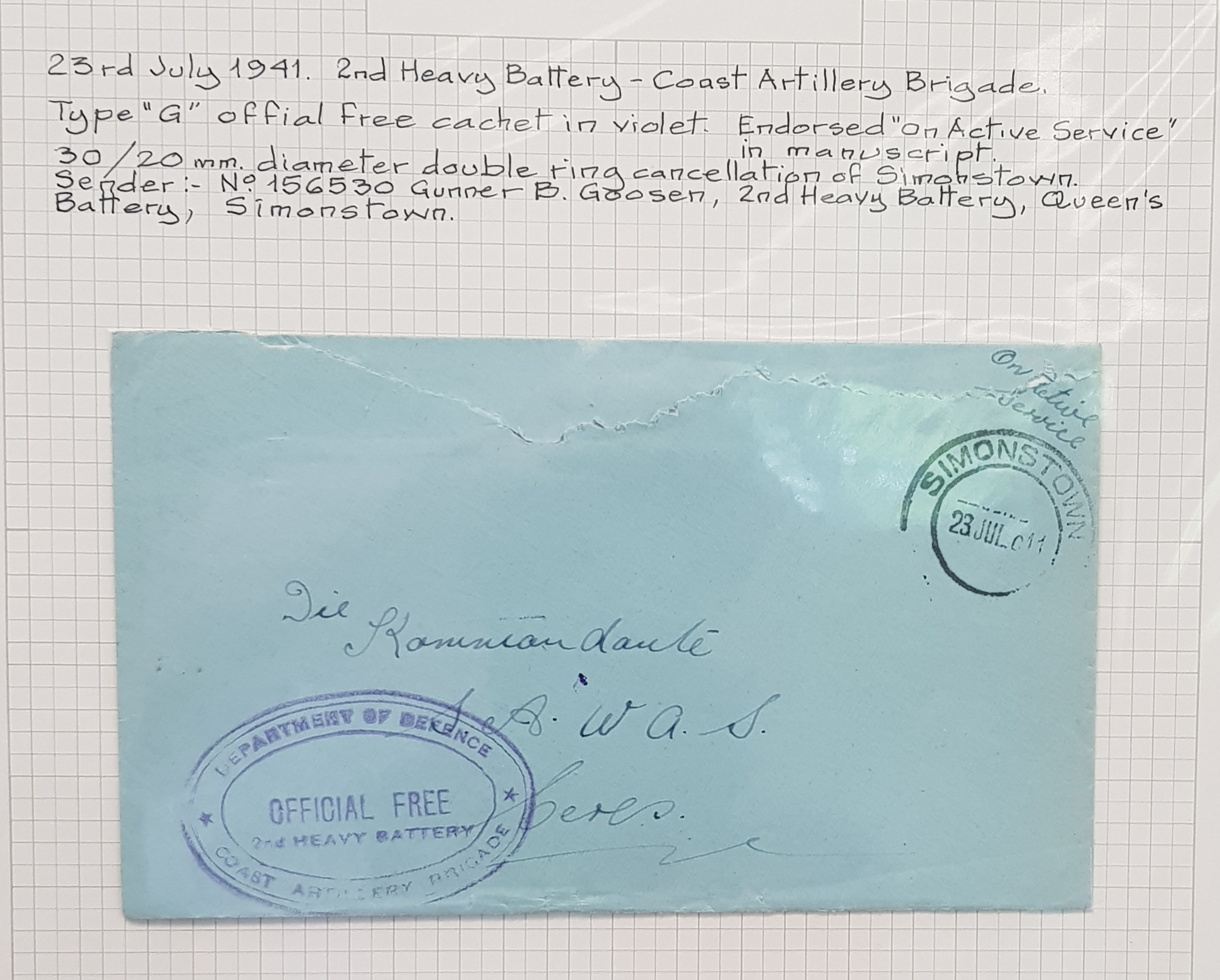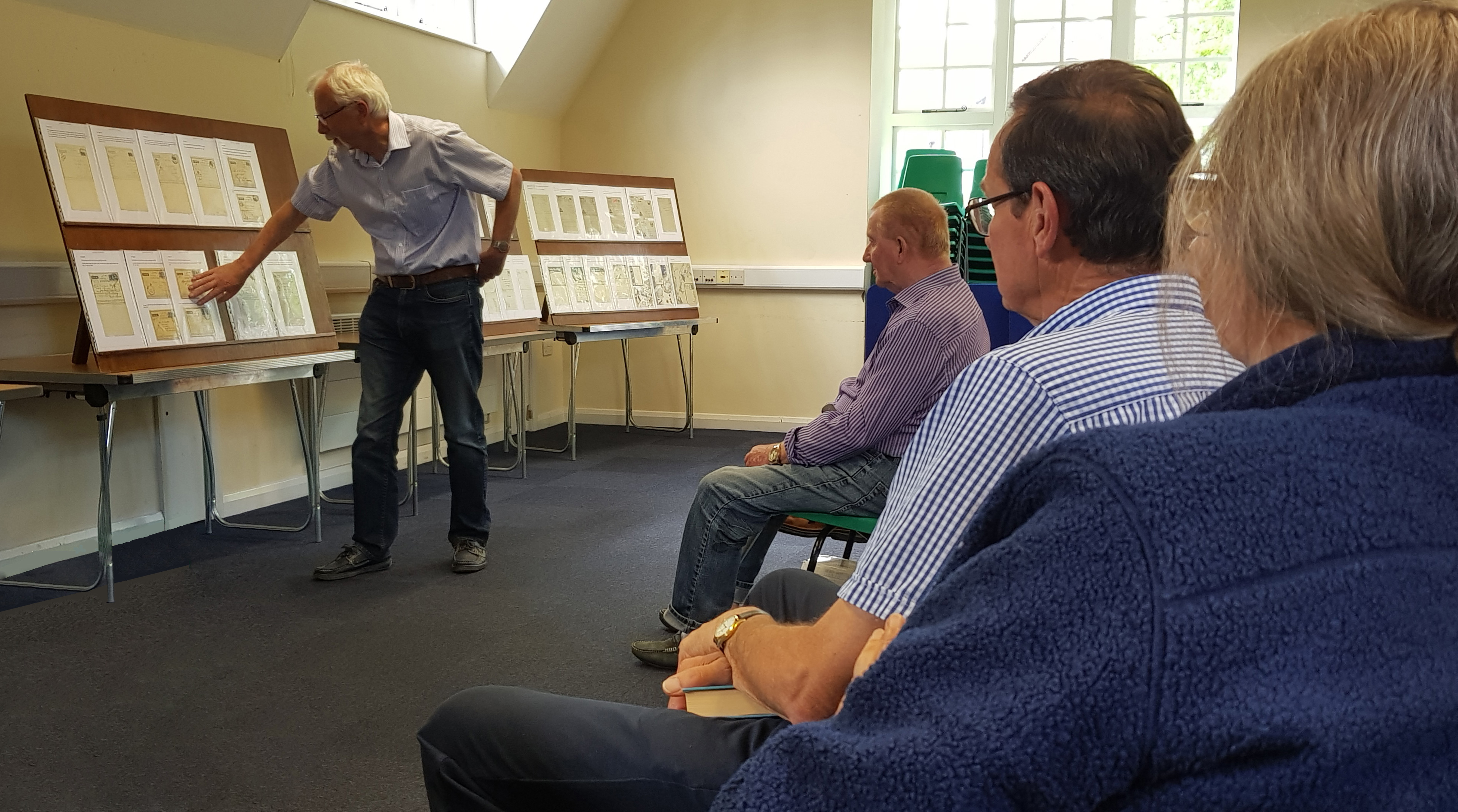SACS Letchworth - 7th May 2022
Quote from Steve on June 10, 2022, 10:07 amThe recent SACS meeting in Letchworth on 7th May was great fun with very good displays from dedicated South Africa collectors. Organised by the affable Bob Hill, the mood was upbeat. The spirit of philatelic bonhomie among the 12 attendees was as good as the previous meeting in October 2021. Sadly a few regular members could not make it. However, if Bob can keep this up, Letchworth will begin to rival Meriden as the 'must go to' venue. I hope so.
It had been proposed that a Bourse be opened at the meeting in the absence of dealers. A Bourse is a 'Bring and Buy' table much like a Car Boot sale where you recycle your unwanted philatelic or postal history items by having others take it away at nominal cost. To our surprise, quite a number of items were sold off the table. This was easily done and is well-worth doing again at future SACS meetings, like Meriden which takes itself more seriously with an auction.
Attending was a newcomer Charlie Rudge, a dealer specialising in Rhodesia. It was good to see some new stock from him. Most of the attendees bought something from him. The only problem we/he had was that we had asked him that nothing be sold while displays were being presented as this is both a distraction to the presenter and audience. As a result, the time available to view his material was limited. Nevertheless, I believe he did quite well and and went home at least with petrol money in his pocket. I purchased a lovely ROBBEN ISLAND single circle postmark of 1888 on brutalised postcard from him for next to nothing. I am delighted with it. Keep up the good work, Charlie, and hopefully see you at the next SACS meeting in Meriden on 26th - 27th June 2022.
On a 'marketing' point, (something which we DO need to do to promote our activities), Bob as the convenor of the meeting invited members of his Hitchin Stamp Club of which he is Chairman to attend our SACS meeting. This simple act introduced a few more collectors to our activities. Some even bought material from Charlie so maybe they will join SACSs one day? When we have the next SACS meeting in Meriden we should also invite members of local stamp clubs and societies to attend as 'day trip' visitors. This will swell the numbers attending and over time may lead to some new members. I suggest that SACS appoint a dedicated Marketing / Promotions Manager to make this sort of thing happen.
Rob Lester began by displaying almost 100 postcards showing post offices from South African towns. He embellished these with examples of their postmarks and also an interesting description of the town's history, often with the origin of its name. Among these were Benoni, a gold-mining town on the Witwatersrand whose Hebrew name means "son of my sorrow", (so-named because of the difficulty in establishing the boundaries of existing gold mining claims); Germiston, curiously said to be "a farm in Glasgow"; Eshowe, once the capital of British-ruled Zululand, whose name refers to the sound of the wind blowing through the nearby Dlinza Forest; and King William's Town on the banks of the Buffalo River which should require no explanation other than the meaning of 'Qonce', the name by which the town is known today. Rob also showed several enviable postcards, one of the Simonstown Post Office and another of troops parading before the Post Office in Cantonment Standerton. He included the unofficial 'Midget Town' datestamp with a 'non-PC' postcard showing its dinky little Post Office at Johannesburg's 1934 Empire Exhibition.
I displayed the 'Cantonments of the Imperial Garrison 1900 - 1919'. Cantonments were self-sufficient British Army 'garrison towns'. In 1901 the British Army was burning farms and forcing 26,000 Boer women and children and some 16,000 Black South Africans into refugee camps where they died of neglect and worse. The war ended well for British capital but badly for the Boers who lost land, wives, children and their cherished Republican status. The British agreed to future independent government but not the restoration of the Boer republics. Blacks South Africans remained disenfranchised while power was transferred to a Union of Boer and Brit as 'White South Africans' in an increasingly segregated South Africa. Britain's failure to ensure representation for Black South Africans was a missed opportunity that later led the Nationalists to introduce Apartheid as a political solution to the 'Native Question'. With the withdrawal of the Imperial Garrison at the start of WW1 and the invasion of GSWA a Republican Rebellion broke out. It was crushed by Empire Loyalist Prime Minister Louis Botha, previously the Commandant General of the ZAR forces. This led to generational bitterness within White South African politics, almost to the exclusion of all else.
The lunch time refreshments were excellent and varied. Thanks must go to the Lesters from bringing the 'sarmies' and to Lyn for tidying up. A rare treat, some biltong and droewors (Afr. dried sausage), made an appearance among the sandwiches, rolls, cakes, biscuits and cups of tea. Most of the Brits politely declined the biltong. I told them the old chestnut of the 'Engelsman' who when offered biltong in SA thought it was a plug of tobacco and tried to smoke it in his pipe. If they were determined not to eat biltong before that story, the 'verdomde Engels' soon left the biltong to me, Charlie, Annemarie, Lyn and,most surprisingly, Bob. He had no fear and tried this SA vulgarity for the first time. He liked the taste of old blood .... a lot .... and subsequently returned for more and more. Mmmmm..... lekker nè, Bob!
After lunch Chris Oliver, Hon. Secretary, displayed a wide range of cachets on South African WW2 Military Mail. One that excited my attention was a Department of Defence, Coast Artillery Battery, 2nd Heavy Battery, Simonstown cachet. I had not seen such a cachet before and knew it would improve my Simonstown display immensely. "No", said Chris very firmly, he was not prepared to swap it with me! According to the sender, the 2nd Heavy Battery manned the three Mark VII Naval 9.2" guns of the Queen's (not Scala) Battery on Redhill above Simon's Town. There were two other batteries defending the Cape Peninsula, the Apostle Battery at Llandudno and another on Robben Island. Today, these three batteries provide the greatest concentration of 9.2" guns in the world. A quick look at my Robben Island accumulation shows a similar cachet attributed to the 5th Heavy Battery. The many cachets in Chris's impressive display will surely hold something of similar local interest to other SA military postal history collectors.
Tony Johnson, the Hon. Editor of 'The Springbok' and Hon. 'Resident Techie' in charge of Zoom meetings, made the bold decision to provide a PowerPoint display of his 'Bantams'. I was all for PowerPoint displays when I was new to this game but as it is a totally different format to the long-serving tradition of writing-up A4 display pages I got beaten down by those in my local society who argued that it threatened the traditional competitive paper-based displays. For my part I am glad Tony recognised that PowerPoint was simply the best way for him to show his display. Bantams were reduced in size to save paper during WW2. As a result they start from a position of being smaller than most stamps and consequently need to be viewed at a higher magnification than normal. Showing flaws on this material on an A4 page is almost futile. Tony's choice of Powerpoint display was undoubtedly the best way for him to show his subject which was essentially the flaws of and the identification of plates on the War Effort issue of 1942 -1944. Using PowerPoint Tony was able to show us full size views at 100s x magnification and.... hey presto.... there they were, all the flaws up front and personal to those in the back row. Bob agrees. PowerPoint is "great for fly-'specking".
Dave Osborn, previously the SACS Hon. Treasurer, gave a measured and knowledgeable 51 page display on Aerogrammes and Air Letters, mostly of WW2 and all from southern Africa. For those who are interested in this subject, Dave stated that its Bible is the "British Forces Air Mail Letter Cards and Air Letters 1941-1977" (Forces Postal History Society by O.R.J. Lee. 1983.). Air Mail Letter Cards were first introduced on 3rd April 1941 for British Armed Forces in the Middle East and Central Mediterranean. An Air Letter form with 6d adhesive stamp was extended to South Africa on 9th April 1943. Dave revealed several southern African varieties, something often only determined by the paper used. Type C1 was the most common and used a variety of different paper colours as well as different smaller lettering. Type K1 included Army numbers, came in different colours with many having triangles in corners and or elsewhere. Christmas examples from 1942 - 1945 were shown. Dave showed a digital measuring device that he used to measure sizes of text on letter and the size of the envelopes, this often being the only way to determine their type.
Bob gave the final display which required audience participation. This was a suitable interesting and fun way to end the day's proceedings. Anyone asleep soon woke up to the sound of raucous laughter. Bob produced 26 folders, one for each letter of the alphabet. Those attending were asked to pick a letter from A - Z. On being given a letter, Bob opened the appropriate folder and displayed material relative to that letter. Thus he was able to show among several pages per folder 'A' for Apartheid, 'V' for Verwoerd, 'X' for Xhosa. When 'K' was requested by Lyn Lester, out came his well-known 'Kit Kat display. This is a SACS in-joke. Bob is the only postal historian with a world-beating Kit-Kat wrapper display, the medium by which he projects his good humoured understanding of the foibles of South Africa's past history through his collection of different varieties of Kit-Kat wrappers. The meeting concluded with great mirth as the audience spontaneously attempted to outdo Bob with alternative postal references.
All-in-all, it was a very good day for SA collectors. Now all we have to do is get the message out and up the attendance and Letchworth will be in business as a regional venue to rival Meriden whose next meeting is on 26th and 27th June 2022. See you there?
Images Below from Top Down:
1]. Rob Lester's 'Post Offices on Postcards' gets the attention of our 'Lady Members'.
2]. Rob's enviable Standerton Cantonment Church Parade Postcard from his display.
3]. Chris Oliver stoops to conquer with a small offering of his vast Military Mail display.
4]. Chris' enviable Coastal Defence Artillery cover from Queen's Battery, Simonstown.
5]. Dave Osborn displays WW2 Aerogrammes and Air Letters from all over southern Africa'.
The recent SACS meeting in Letchworth on 7th May was great fun with very good displays from dedicated South Africa collectors. Organised by the affable Bob Hill, the mood was upbeat. The spirit of philatelic bonhomie among the 12 attendees was as good as the previous meeting in October 2021. Sadly a few regular members could not make it. However, if Bob can keep this up, Letchworth will begin to rival Meriden as the 'must go to' venue. I hope so.
It had been proposed that a Bourse be opened at the meeting in the absence of dealers. A Bourse is a 'Bring and Buy' table much like a Car Boot sale where you recycle your unwanted philatelic or postal history items by having others take it away at nominal cost. To our surprise, quite a number of items were sold off the table. This was easily done and is well-worth doing again at future SACS meetings, like Meriden which takes itself more seriously with an auction.
Attending was a newcomer Charlie Rudge, a dealer specialising in Rhodesia. It was good to see some new stock from him. Most of the attendees bought something from him. The only problem we/he had was that we had asked him that nothing be sold while displays were being presented as this is both a distraction to the presenter and audience. As a result, the time available to view his material was limited. Nevertheless, I believe he did quite well and and went home at least with petrol money in his pocket. I purchased a lovely ROBBEN ISLAND single circle postmark of 1888 on brutalised postcard from him for next to nothing. I am delighted with it. Keep up the good work, Charlie, and hopefully see you at the next SACS meeting in Meriden on 26th - 27th June 2022.
On a 'marketing' point, (something which we DO need to do to promote our activities), Bob as the convenor of the meeting invited members of his Hitchin Stamp Club of which he is Chairman to attend our SACS meeting. This simple act introduced a few more collectors to our activities. Some even bought material from Charlie so maybe they will join SACSs one day? When we have the next SACS meeting in Meriden we should also invite members of local stamp clubs and societies to attend as 'day trip' visitors. This will swell the numbers attending and over time may lead to some new members. I suggest that SACS appoint a dedicated Marketing / Promotions Manager to make this sort of thing happen.
Rob Lester began by displaying almost 100 postcards showing post offices from South African towns. He embellished these with examples of their postmarks and also an interesting description of the town's history, often with the origin of its name. Among these were Benoni, a gold-mining town on the Witwatersrand whose Hebrew name means "son of my sorrow", (so-named because of the difficulty in establishing the boundaries of existing gold mining claims); Germiston, curiously said to be "a farm in Glasgow"; Eshowe, once the capital of British-ruled Zululand, whose name refers to the sound of the wind blowing through the nearby Dlinza Forest; and King William's Town on the banks of the Buffalo River which should require no explanation other than the meaning of 'Qonce', the name by which the town is known today. Rob also showed several enviable postcards, one of the Simonstown Post Office and another of troops parading before the Post Office in Cantonment Standerton. He included the unofficial 'Midget Town' datestamp with a 'non-PC' postcard showing its dinky little Post Office at Johannesburg's 1934 Empire Exhibition.
I displayed the 'Cantonments of the Imperial Garrison 1900 - 1919'. Cantonments were self-sufficient British Army 'garrison towns'. In 1901 the British Army was burning farms and forcing 26,000 Boer women and children and some 16,000 Black South Africans into refugee camps where they died of neglect and worse. The war ended well for British capital but badly for the Boers who lost land, wives, children and their cherished Republican status. The British agreed to future independent government but not the restoration of the Boer republics. Blacks South Africans remained disenfranchised while power was transferred to a Union of Boer and Brit as 'White South Africans' in an increasingly segregated South Africa. Britain's failure to ensure representation for Black South Africans was a missed opportunity that later led the Nationalists to introduce Apartheid as a political solution to the 'Native Question'. With the withdrawal of the Imperial Garrison at the start of WW1 and the invasion of GSWA a Republican Rebellion broke out. It was crushed by Empire Loyalist Prime Minister Louis Botha, previously the Commandant General of the ZAR forces. This led to generational bitterness within White South African politics, almost to the exclusion of all else.
The lunch time refreshments were excellent and varied. Thanks must go to the Lesters from bringing the 'sarmies' and to Lyn for tidying up. A rare treat, some biltong and droewors (Afr. dried sausage), made an appearance among the sandwiches, rolls, cakes, biscuits and cups of tea. Most of the Brits politely declined the biltong. I told them the old chestnut of the 'Engelsman' who when offered biltong in SA thought it was a plug of tobacco and tried to smoke it in his pipe. If they were determined not to eat biltong before that story, the 'verdomde Engels' soon left the biltong to me, Charlie, Annemarie, Lyn and,most surprisingly, Bob. He had no fear and tried this SA vulgarity for the first time. He liked the taste of old blood .... a lot .... and subsequently returned for more and more. Mmmmm..... lekker nè, Bob!
After lunch Chris Oliver, Hon. Secretary, displayed a wide range of cachets on South African WW2 Military Mail. One that excited my attention was a Department of Defence, Coast Artillery Battery, 2nd Heavy Battery, Simonstown cachet. I had not seen such a cachet before and knew it would improve my Simonstown display immensely. "No", said Chris very firmly, he was not prepared to swap it with me! According to the sender, the 2nd Heavy Battery manned the three Mark VII Naval 9.2" guns of the Queen's (not Scala) Battery on Redhill above Simon's Town. There were two other batteries defending the Cape Peninsula, the Apostle Battery at Llandudno and another on Robben Island. Today, these three batteries provide the greatest concentration of 9.2" guns in the world. A quick look at my Robben Island accumulation shows a similar cachet attributed to the 5th Heavy Battery. The many cachets in Chris's impressive display will surely hold something of similar local interest to other SA military postal history collectors.
Tony Johnson, the Hon. Editor of 'The Springbok' and Hon. 'Resident Techie' in charge of Zoom meetings, made the bold decision to provide a PowerPoint display of his 'Bantams'. I was all for PowerPoint displays when I was new to this game but as it is a totally different format to the long-serving tradition of writing-up A4 display pages I got beaten down by those in my local society who argued that it threatened the traditional competitive paper-based displays. For my part I am glad Tony recognised that PowerPoint was simply the best way for him to show his display. Bantams were reduced in size to save paper during WW2. As a result they start from a position of being smaller than most stamps and consequently need to be viewed at a higher magnification than normal. Showing flaws on this material on an A4 page is almost futile. Tony's choice of Powerpoint display was undoubtedly the best way for him to show his subject which was essentially the flaws of and the identification of plates on the War Effort issue of 1942 -1944. Using PowerPoint Tony was able to show us full size views at 100s x magnification and.... hey presto.... there they were, all the flaws up front and personal to those in the back row. Bob agrees. PowerPoint is "great for fly-'specking".
Dave Osborn, previously the SACS Hon. Treasurer, gave a measured and knowledgeable 51 page display on Aerogrammes and Air Letters, mostly of WW2 and all from southern Africa. For those who are interested in this subject, Dave stated that its Bible is the "British Forces Air Mail Letter Cards and Air Letters 1941-1977" (Forces Postal History Society by O.R.J. Lee. 1983.). Air Mail Letter Cards were first introduced on 3rd April 1941 for British Armed Forces in the Middle East and Central Mediterranean. An Air Letter form with 6d adhesive stamp was extended to South Africa on 9th April 1943. Dave revealed several southern African varieties, something often only determined by the paper used. Type C1 was the most common and used a variety of different paper colours as well as different smaller lettering. Type K1 included Army numbers, came in different colours with many having triangles in corners and or elsewhere. Christmas examples from 1942 - 1945 were shown. Dave showed a digital measuring device that he used to measure sizes of text on letter and the size of the envelopes, this often being the only way to determine their type.
Bob gave the final display which required audience participation. This was a suitable interesting and fun way to end the day's proceedings. Anyone asleep soon woke up to the sound of raucous laughter. Bob produced 26 folders, one for each letter of the alphabet. Those attending were asked to pick a letter from A - Z. On being given a letter, Bob opened the appropriate folder and displayed material relative to that letter. Thus he was able to show among several pages per folder 'A' for Apartheid, 'V' for Verwoerd, 'X' for Xhosa. When 'K' was requested by Lyn Lester, out came his well-known 'Kit Kat display. This is a SACS in-joke. Bob is the only postal historian with a world-beating Kit-Kat wrapper display, the medium by which he projects his good humoured understanding of the foibles of South Africa's past history through his collection of different varieties of Kit-Kat wrappers. The meeting concluded with great mirth as the audience spontaneously attempted to outdo Bob with alternative postal references.
All-in-all, it was a very good day for SA collectors. Now all we have to do is get the message out and up the attendance and Letchworth will be in business as a regional venue to rival Meriden whose next meeting is on 26th and 27th June 2022. See you there?
Images Below from Top Down:
1]. Rob Lester's 'Post Offices on Postcards' gets the attention of our 'Lady Members'.
2]. Rob's enviable Standerton Cantonment Church Parade Postcard from his display.
3]. Chris Oliver stoops to conquer with a small offering of his vast Military Mail display.
4]. Chris' enviable Coastal Defence Artillery cover from Queen's Battery, Simonstown.
5]. Dave Osborn displays WW2 Aerogrammes and Air Letters from all over southern Africa'.

